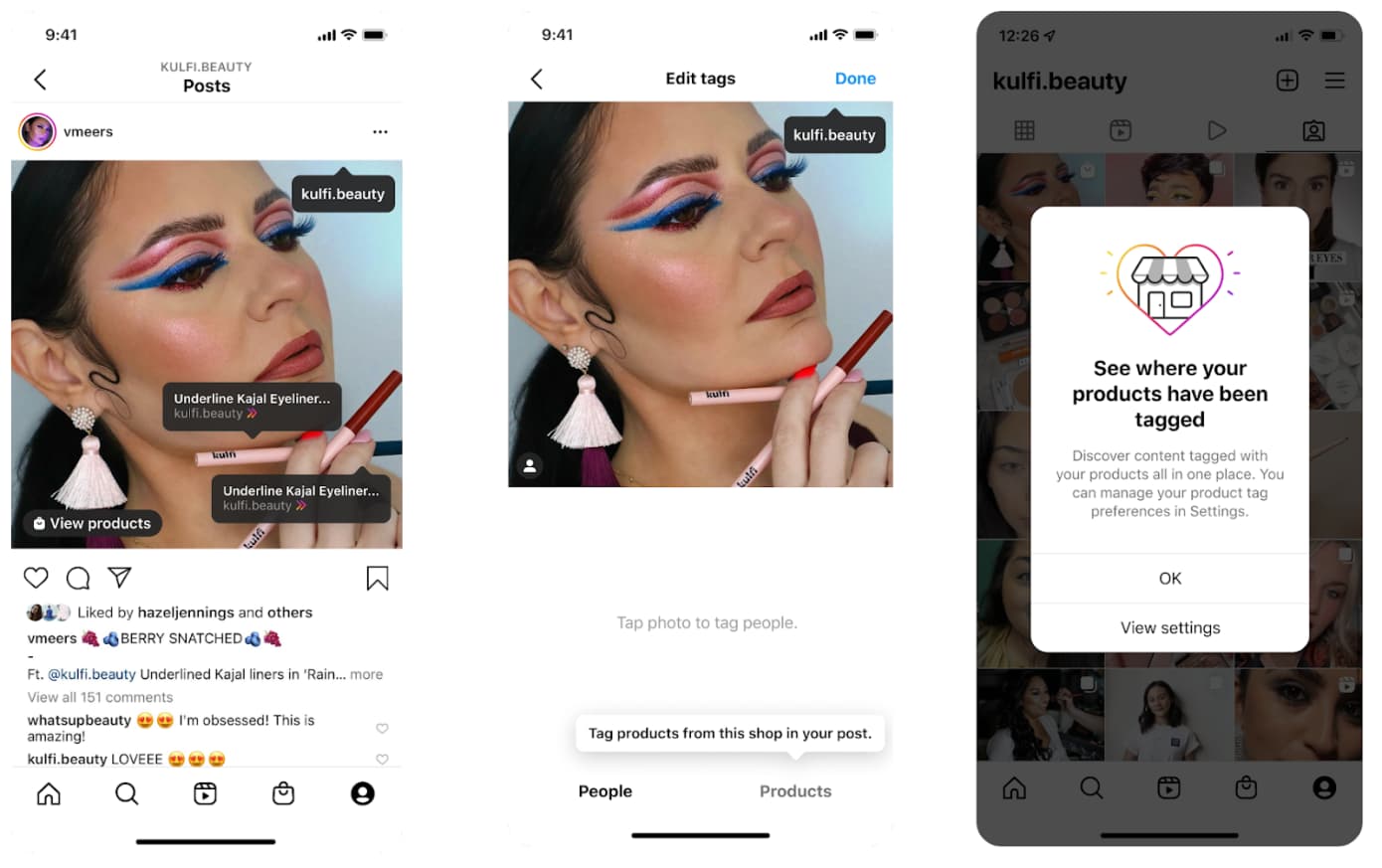Instagram is the latest player to accelerate rise of shoppability. This week, it expanded its pilot product tagging feature to everyone in the U.S.. In short, this lets Instagram users, influencers, and creators tag products in their posts to be more comprehensive or share credit in any resulting commerce.
By doing this, Instagram is leaning into existing user behavior in the shareability of life moments… many of which involve products. For example, someone excited about earrings they just bought may naturally post about it on Instagram. Now they can formalize it (and make it more shoppable) in a tag.
To put some numbers behind the claim that shopping comes naturally on Instagram, it reports that 1.6 million people tag at least one brand each week on the app. This includes content that ends up in the formal Shop tab, as well as the main Instagram feed – both of which see high shopping intent.
FOMO Effect
So how does this all work? Instagram users now have an additional option in the familiar post and Story workflow. They can take or select a photo as normal then choose to add a caption (all familiar stuff to Instagram regulars). There they can choose to “Tag Products” to search for brands/products to tag.
Given that it’s a selection process, this makes it fairly structured from a taxonomy standpoint. This will ensure that the tags are well organized and avoid duplicates and other messy data scenarios that cause headaches for brands. It also adds structure on the user end which may lessen friction.
From the brand perspective, they’re also notified when tagged and can see all the places they’ve been tagged in their Instagram Shopping profile. Their dashboard lets them control who tags their products, thus engendering brand safety. Altogether, it’s a compelling set of features for brand marketers.
But one missing piece is if a business or its products aren’t in that tagging taxonomy. That could be the evil genius of this move, as an Instagram Shopping account is required to participate. So what Instagram could be doing here is onboarding more brands (read: potential paid advertisers) with a FOMO effect.
Put another way, this is a clear move towards boosting engagement for consumer brands on Instagram. When they see that they’re being tagged by users and influencers, it’s an explicit demand signal that Instagram hopes they’ll act on. That action can include heightened organic presence or paid ads.
Meanwhile, this also appeals to users, creators, and influencers who now have more control over their posts. That could be a hook to engage more, playing to their vanity. Or in the cases of bonafide influencers, it could spark affiliate relationships with brands, further incentivizing posting volume.
Browsing to Buying
Circling back to the broader shoppability trend, it marks the rise of buy buttons and transactional calls-to-action in everything from Instagram Stories to YouTube videos to real world items you point your phone at. The latter continues to emerge in visual search such as Google Lens and Snap Scan.
To be fair, this isn’t a new phenomenon given years of social media giants adding buy buttons to their feeds. This is a natural pairing as people like to share tastes and brand affinity, thus offering products a viral kick. And all of the above has accelerated as it piggybacks on Covid-driven eCommerce inflections.
With respect to Instagram’s latest move, it builds on its status as one of the original shoppability plays. It’s cultivated and conditioned a use case around product discovery. Expect it to continue building on that UX persona in ways that reduce friction in the eCommerce flow – from browsing to buying.
Meanwhile, the product tagging expansion will roll out to all U.S. users in the coming months according to Instagram. We’ll watch closely for signs of user traction and impact on its ad business.




